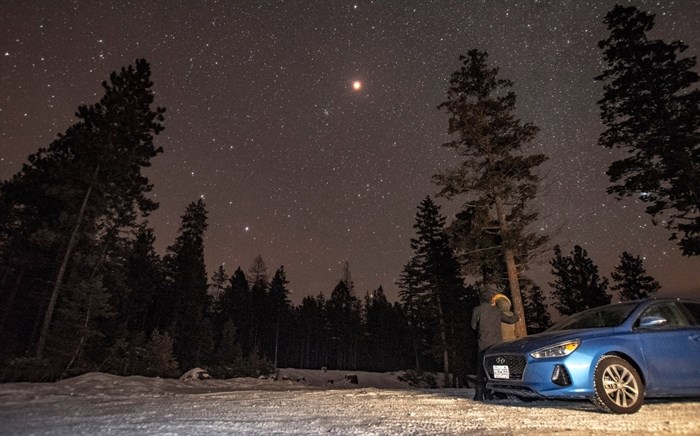
The moon will appear reddish-orange during a lunar eclipse.
(DAN WALTON / iNFOnews.ca)
November 18, 2021 - 11:00 AM
The sun and moon will be on completely opposite sides of the planet tonight and the result is a lunar eclipse.
The moon will have its reflected sunlight blocked for several hours as the Earth floats through the path between the sun and the moon.
For anyone interesting in witnessing the phenomenon in the Pacific Standard Time zone, NASA says the eclipse technically begins at 10:02 p.m. today, Nov. 18, but the dimming of the moon won’t be noticeable until 11:18 p.m.
The eclipse will intensify until it reaches its peak at 1:02 a.m.
The shadow cast by the earth will remain visible until 2:47 a.m., and the event comes to an end at 4:03 a.m.
That duration is much longer than a normal lunar eclipse – it will be the longest since 1440.
READ MORE: NASA: Space station remains at high risk from shot satellite
On its website, NASA encourages viewers to wear “suitably celebratory celestial attire” in honour of the full moon.
Unfortunately local weather looks like it may pose a challenge.
In Kelowna, Vernon and Kamloops clouds will cover 73% to 78% of those cities between midnight at 4 a.m. The forecast for Kamloops appears slightly less cloudy.
Sometimes sky gazers can rise above the clouds by travelling to higher elevations, however, nearby favourites like Big White Ski Resort and Apex Mountain are both forecasting precipitation during the time of the eclipse.
To contact a reporter for this story, email Dan Walton or call 250-488-3065 or email the editor. You can also submit photos, videos or news tips to the newsroom and be entered to win a monthly prize draw.
We welcome your comments and opinions on our stories but play nice. We won't censor or delete comments unless they contain off-topic statements or links, unnecessary vulgarity, false facts, spam or obviously fake profiles. If you have any concerns about what you see in comments, email the editor in the link above.
News from © iNFOnews, 2021